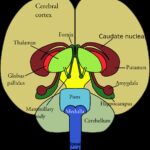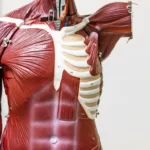The human nervous system is a marvel of complexity, orchestrating a symphony of signals that govern our thoughts, actions, and bodily functions. Comprising the central nervous system (CNS) and the peripheral nervous system (PNS), this intricate network of neurons plays a crucial role in maintaining homeostasis and responding to the ever-changing environment. In this blog, we will delve into the structure and functions of the CNS and PNS, and explore the fascinating concept of neuroplasticity.
Central Nervous System (CNS):
The central nervous system, consisting of the brain and spinal cord, is the command center of the body. It processes sensory information, initiates responses, and plays a pivotal role in cognitive functions.
- Brain:
- Divided into various regions, each responsible for specific functions.
- The cerebral cortex governs higher cognitive functions, such as thinking, memory, and language.
- The cerebellum coordinates motor movements and balance.
- The limbic system regulates emotions and memory.
- Spinal Cord:
- Connects the brain to the rest of the body.
- Facilitates the transmission of signals between the brain and peripheral nerves.
- Crucial for reflex actions, allowing rapid responses to stimuli without conscious thought.
Peripheral Nervous System (PNS):
The peripheral nervous system extends throughout the body, connecting the CNS to various organs, muscles, and sensory receptors.
- Somatic Nervous System:
- Controls voluntary muscle movements.
- Receives sensory information and transmits it to the CNS.
- Autonomic Nervous System (ANS):
- Regulates involuntary bodily functions, such as heartbeat, digestion, and respiratory rate.
- Comprises the sympathetic and parasympathetic branches, maintaining balance in the body’s physiological responses.
- Enteric Nervous System (ENS):
- Often referred to as the “second brain” due to its role in regulating the gastrointestinal tract.
- Manages digestive processes independently but communicates with the CNS.
Neuroplasticity:
Neuroplasticity, also known as brain plasticity, is the brain’s remarkable ability to reorganize itself by forming new neural connections throughout life. This phenomenon challenges the conventional belief that the brain’s structure is fixed after a certain age. Neuroplasticity occurs at various levels:
- Synaptic Plasticity:
- Involves changes in the strength of connections (synapses) between neurons.
- Long-term potentiation (LTP) and long-term depression (LTD) are crucial mechanisms in synaptic plasticity, influencing learning and memory.
- Structural Plasticity:
- Refers to the physical changes in the brain’s structure, such as the growth of new dendrites or the formation of new synapses.
- Occurs in response to learning, experience, and environmental factors.
- Functional Plasticity:
- Involves the brain redistributing tasks among different areas to compensate for damage or changes in neural networks.
- Often observed in cases of injury or during the recovery process after a stroke.
Conclusion:
Understanding the central and peripheral nervous systems, along with the awe-inspiring concept of neuroplasticity, provides profound insights into the complexity and adaptability of the human brain. The ability of our nervous system to continuously evolve in response to experiences, challenges, and learning underscores the resilience and potential for growth within each individual. As research in neuroscience progresses, our comprehension of these intricate systems will likely deepen, unraveling more mysteries and opening new avenues for therapeutic interventions and advancements in brain-related disorders.






